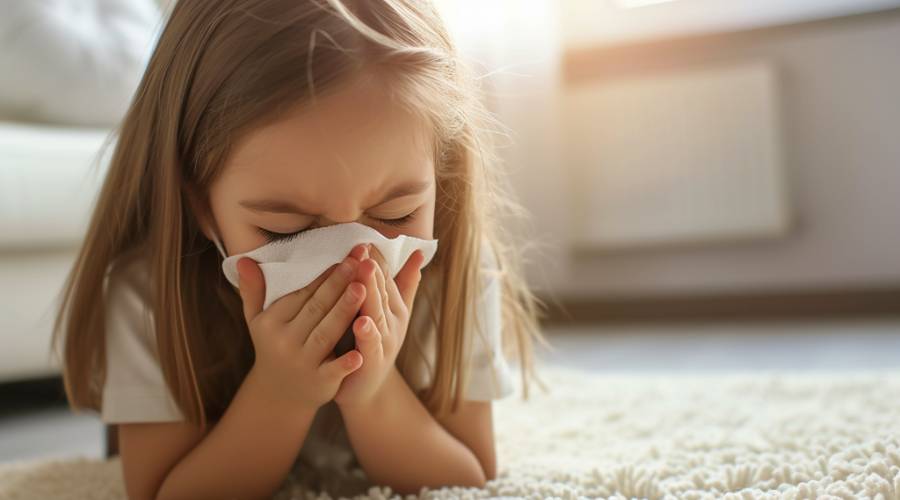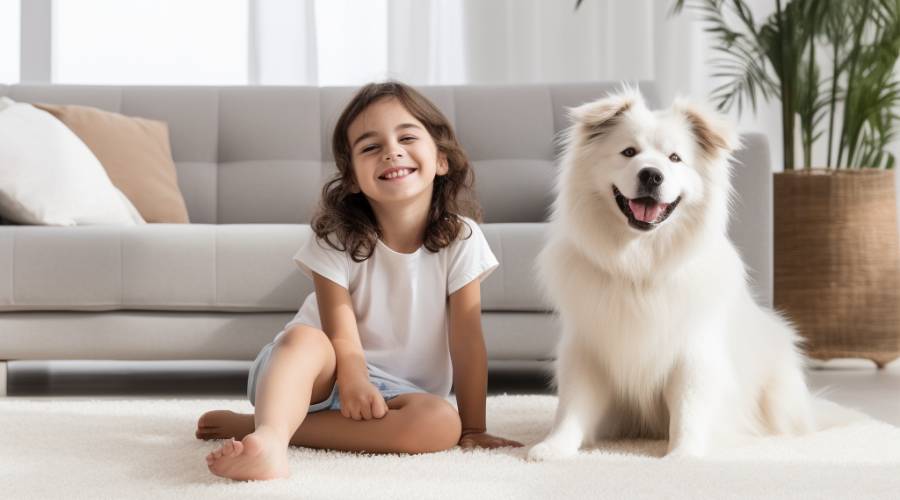How Does Carpet Cleaning Can Help Relieve Allergy Symptoms
Your Carpets May Be Making Allergies Worse – Here’s What Can Help

That sniffling, sneezing, runny-nose feeling of allergy season is upon us again. As one reaches for another tissue, it’s hard not to think about how the pollen, dust and pet dander seems worse than ever this year.
Many used to assume most of those common allergens were lurking in the air around the house. But what often isn’t realised is that carpets have been harbouring loads of irritants that continue to plague residents even after seasonal allergy ends. The dirt and even mould get trapped deep in the carpeted area, and everyday vacuums just can’t suck them out.
The result? Carpeting has been ramping up allergies for months and will likely continue to do so until they get professional cleaners. For those who can relate, keep reading to learn why they cause so many allergy issues, and what can be done to fix them.
Why Carpets Are Allergy Breeding Grounds
Carpets are made from fabric, whether synthetic fibers or natural wool. So just like any fabric, they naturally collect tons of dust and other debris carried in from outdoors or shed around homes.
The main difference is that unlike clothes, the particles get wedged deep inside carpet fibers where they’re hard to remove. Regular vacuuming doesn’t cut it.
To make matters worse, wet carpet surfaces from spills or leaks become the perfect place for mould, bacteria, and dust mites to multiply. Exposure to those nasty microscopic particles takes allergies from bad to unbearable.
In short, particles trapped inside carpets are directly worsening and prolonging allergic reactions. Even after allergy peak month ends, hidden mold or mildew growth keeps winter coughs and sniffles going strong.
Does the Carpet Material Change Anything?
Well, the simple answer is that all materials—synthetic nylon, plush wool, natural sisal—will collect some level of dust and allergens. Tiny particles invariably get tracked indoors and embedded into the carpet over time through everyday use.
However, some carpeting holds onto and shelters allergens more than others:
- Wool carpet is extremely porous, making it easiest for mould, bacteria and bugs like house mites to take hold. That’s bad news for allergy sufferers.
- Shag carpets, while comfy underfoot, have long fibers that cling to dust and pollen more tenaciously.
- Carpets treated with or containing volatile organic compounds (VOCs) give off chemical fumes that can directly irritate noses and throats.
So when shopping for new ones, opt for a tighter-weave, low-VOC nylon carpet. Though no carpet is allergy-proof, these create fewer places for irritants to hide.
Maintaining Carpets Between Professional Cleanings
According to carpet care experts, thorough cleaning every 6-12 months using hot water extraction method is best for removing troves of allergens.
But maintaining carpets well between cleaning appointments is also critical to prevent excess allergen buildup:
- Hoover daily using a vacuum cleaner with a HEPA filter to trap dust and other pollutants that would otherwise re-circulate into the air quality you breathe.
- Spot clean stains ASAP since moisture allows mould colonies to take root and spread in the padding beneath.
- Run an air purifier rated for large rooms to filter more airborne allergens out before they have the chance to settle into clean carpet piles.
- Keep Fido brushed and clean! Regular pet grooming cuts down on the amount of pet hair that transfers to carpeting and acts as allergen kindling.
| DIY Carpet Maintenance Checklist |
|---|
| Vacuum daily with HEPA filter |
| Spot clean new stains quickly |
| Use a room-sized air purifier |
| Bathe & brush pets on a regular basis |
Strictly maintaining carpets between deep cleans makes allergy and asthma sufferers’ meds go a lot further. But for truly allergen-free floors, regular cleaning is a must to get relief!
Why Professional Deep Cleaning Beats DIY Methods
Professional carpet cleaners use powerful machines that blast and then vacuum water heated up to over 200°F deep into the piles to wash away allergens other methods leave behind. The high heat simultaneously kills dust mites and mold spores causing my worst allergy woes.
The key is removing all moisture again afterwards. Without the mega-suction pro equipment, remaining dampness can allow mold growth leading to more allergy triggers rather than less.
Many allergists specifically recommend periodic professional steam cleaning to keep forced afterward air systems running cleanly. The difference in my annual allergy misery between DIY foam cleaning solution and real water extraction is immeasurable.

Breathe Easier With Professionally Cleaned Carpets
At the first sign of watery eyes and scratchy throats, call your local carpet cleaning pros to vanquish the nasty allergen hordes wreaking havoc on your respiratory system.
Combine thorough deep cleaning with daily maintenance like HEPA vacuuming, and your carpets will no longer harbour endless allergy attackers even in the height of spring. It makes a world of difference you simply have to experience for yourself!
For professional carpet cleaning methods in Australia, call us at 07 5241 1111 to schedule an allergen-targeting service this season. Breathe easier knowing your flooring have been returned to gently used condition, instead of stirred up allergy dust factories!
